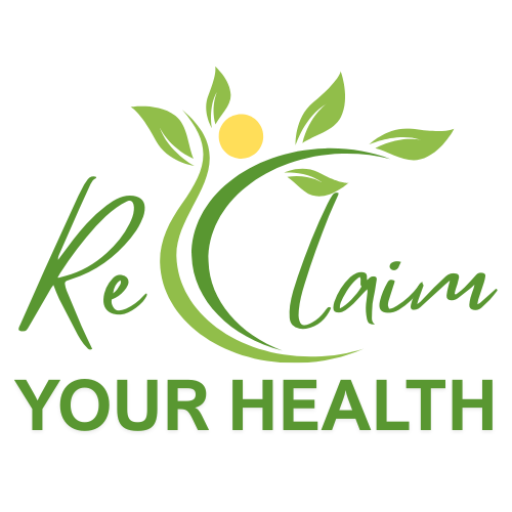Ayurveda, meaning the knowledge of life in Sanskrit, is the ancient healing science originating in India more than 5,000 years ago. While it was once exclusively an oral tradition, passed from master to student, Ayurveda has in recent times become more widely accessible to students and natural health practitioners outside of India. Despite this, there are often some misunderstandings regarding the concepts of constitution, the doshas and the elements in Ayurveda: they are often confused with one another when they are in fact distinct. In this article and others to follow, I will explore these ideas in more detail as they are powerful concepts that can be of great assistance in understanding the current state of an individual and the best way to go about restoring and maintaining optimal health and well-being.
If you are interested in understanding how to reclaim your health and maintain it in a natural way, working together with your body and its constitution, then click here to read about my services.
The Ayurvedic Elements
Contrary to common understanding, Ayurveda has more than three ways of categorising energies, people and their constitutions. The three Dosha of Vata, Pitta and Kapha are well known but these are distinct concepts to the five elements of Ayurveda and Chinese medicine or the four of Greek and Unani (Persian) thought. In fact, some researchers believe that the now famous Chinese Five Elements actually originated within the Ayurvedic corpus (Ros, 2016) – prior to circa 300 B.C., Chinese medicine had focussed exclusively on the duality concept of yin-yang and the eight trigrams (Huard, 1968). Around this time, Tsou Yen begun to introduce concepts likely received from travelling monks from India, after a influx of movement to spread the new Buddhist philosophy. This included the five element system and possibly also the initial seeding of acupuncture and the meridian system, which was found in Ayurvedic texts long before Chinese (Ros, 2016).
Thus, the Rishis of Ayurveda may have been the original source of the five element system that is used to describe the energies and transformations of everything within creation. In Ayurveda, the five elements are described as follows and in this order, from the most subtle to the most dense (Lad, 2002):
- Ether (Akasha) – clear, light, subtle, soft, immeasurable;
- Air (Vayu) – mobile, dry, light, cold, rough, subtle;
- Fire (Agni) – hot, sharp, light, dry, subtle;
- Water (Apas) – cold, liquid, dull, soft, oily, slimy; and
- Earth (Pruthivi) – heavy, dull, static, dense, hard, gross.
Three of these five are named in the same way as the Chinese system. The remaining two, Ether and Air, are thought to correspond to Wind and Metal respectively. These “elements”, really states of matter, and their combinations can be used to describe all matter, physical or subtle, throughout the universe. After influencing the Chinese development of their five elements, this system also travelled West to inspire the later Greek ideas of the four elements of Earth, Air, Fire and Water and their associated humors: Phlegmatic, Sanguine, Choleric and Melancholic. These concepts will be explored in more detail in future articles.
The Ayurvedic Dosha
The Dosha are not the same as the Ayurvedic system of elements (seen above) nor are they exclusively descriptions of constitution, as they are often perceived. Instead, they are three types of energy into which the five elements and their functions are grouped together. The Dosha are throught to bind the five elements into the living flesh of the body (Lad, 2002). The concept of the Dosha are difficult to translate perfectly, so their original Sanskit names are preserved. Dosha literally means “fault”, “impurity” or “mistake”, however this does not convey all of the meaning. Dosha is also organisation – when in balance, the three Dosha regulate the body to maintain that balance. However, when a tipping point is reached, often due to the person ignoring the wisdom of the body through excesses of diet, environment and/or lifestyle, the Dosha can spiral out of control and drive the development and spread of disease, known as Samprapti (explored in this article).
The three Dosha are:
- Vata (Air & Ether) – dry, light, cold, rough, subtle, mobile and clear;
- Pitta (Fire & Water) – hot, sharp, light, liquid, mobile and oily; and
- Kapha (Water & Earth) – heavy, slow, cold, oily, liquid, slimy, dense, soft, static, sticky, hard and gross.
Each of these Dosha will be explored individually in more detail in future articles.
Ayurvedic Constitution
Constitution is a term not commonly used in modern medicine. All patients are treated as though they are the same, differing only by their presenting symptoms. If a disease is presented to a doctor, the protocol for that disease is followed without much further consideration. However, in practice, patients will react differently to the same treatment, whether that be pharmaceutical drugs, herbal medicine, homeopathy or dietary changes. Despite this current (lack of) understanding, it has long been recognised that people are different. Today this is sometimes referred to as someone’s “body type” or sometimes their blood type is considered by nutritionists to inform treatment. Understanding one’s constitution is a valuable tool in determining the best course of treatment and maintenance of health whether it is through diet, lifestyle or other interventions. I will be exploring this concept throughout further articles, examining how the concept of constitution is dealt with across a range of medical traditions.
In Ayurveda, there are considered to be two types of constitution: Prakruti and Vikruti. This is not to say that everyone is classified by one of these two terms, but that each person has two different constitutions. Constitutions in Ayurveda are usually given in terms of the Dosha. Thus there are seven possible constitutions, representing the different possible combinations of Dosha. Of course, even within these seven, there will be differences according to the exact ratios present. However, this gives the practitioner a good understanding of the client and how best to help them.
Prakruti is the original, base constitution, which is thought to be set at the time of conception. It is primarily dependent on the genetics, diet, lifestyle and emotions of the parents at the time of conception and also influenced by the season in which conception occurs. This gives the essential combination and proportions of the elements in that person and should always be considered when determining the best course of treatment. If not, the attempt at helping the person could even end up pushing them further out of balance and deeper into disease.
The Vikruti is the present state of the five elements and three dosha. If the person is in a good state of health, this will be the same as the Prakruti. However, often one or more Dosha has become imbalanced. Comparing the Vikruti with the Prakruti is what informs the practitioner of the best course of action to reverse the course of the disease or imbalance.
Understanding a person’s Prakruti can also inform them of the optimal diet and lifestyle required in order to best keep that person functioning at their optimal state of health. For example, if one’s constitution is heavily influence by Vata, then dry, cold and windy environments as well as bitter, spicy and raw foods should be minimised and often treatment to increase hydration and warmth in the body is beneficial. While even a Vata-dominated person could go out of balance through an excess of Kapha Dosha, he would have more of a buffer to naturally balance and process excesses of this energy than he would Vata-related energies.
In practice, Prakruti and Vikruti are assessed through a range of methods including questioning of the patient, examination of the tongue and pulse and their family history. This is one of the tools I use when working with my clients to help bring them back to optimal health and also teach them how to best maintain their health after our time working together.
If you are interested in understanding how to reclaim your health and maintain it in a natural way, working together with your body and its constitution, then click here.





